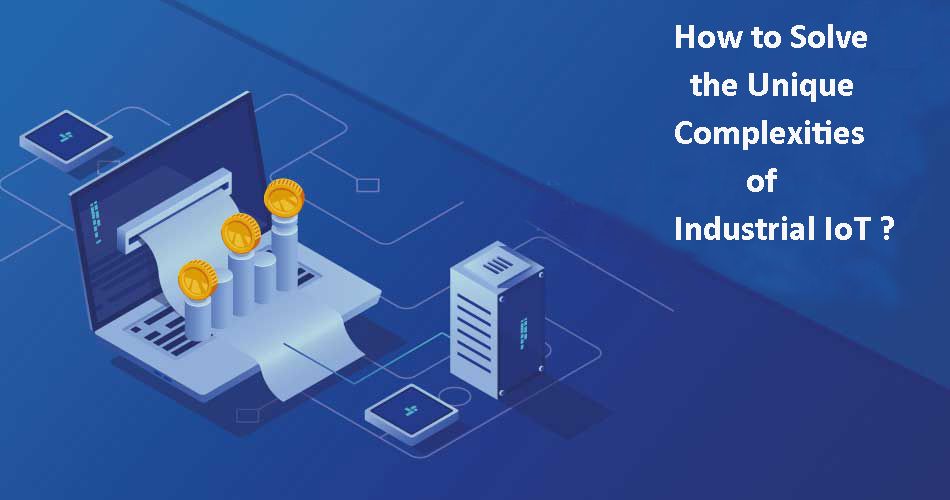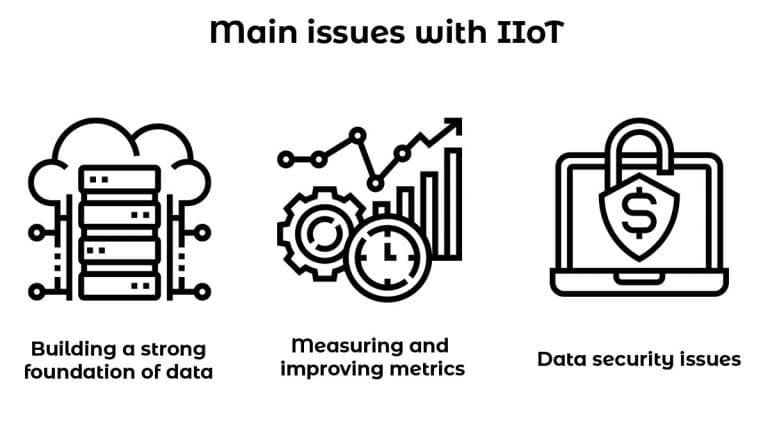How to Solve the Unique Complexities of Industrial IoT
In the IoT consumer applications, it is well revealed how nearly every device is becoming smarter and more connected. IIoT can provide more value in industrial applications by using data from the edge to resolve the manufacturing issues, improve operations and make predictive maintenance a reality.
Analyst firm IDC forecasts that 45% of IoT-generated data will be stored, processed, analysed and acted upon which is close to or at the edge of the network. As per McKinsey, 90% of all data in the world today has been generated in just past two years. The main challenge is that many companies desire to take benefit of the Industrial IoT values to improve their business, but they are not much aware of how to go through a digital transformation without getting relieve of existing legacy equipment.
The Industrial Internet of Things (IIoT) is already supporting industries to operate more securely and productively while increasing efficiency and minimizing costs. The possibility of leveraging data produced by billion-dollar machines by communicating with each other generates tremendous potential for making our world more feasible, efficient and safe.
But IIoT is also about data and enhancing overall efficiencies in several processes, either to manage costs or to improve production. This tends to more competitive companies, handling new innovations faster. As IIOT has several complexities and challenges its ROI still in its early stage. Let’s take a look at complexities of IIOT and solutions to deal with them.
The Complexities of Industrial IoT
Forrester said that IoT is “a complex technology that ignores simple approaches,” in their recent report which pointing towards the enterprises that have been using simple sensors for years but a abundance of communications and software technologies, protocols and standards makes it very difficult to take data from the edge and apply it to the backend application.
As initialized by Forrester, the first challenge that enterprises will find is figuring out how the solution will interface with all of the several legacy controllers and devices on the factory floor. They all use one protocol or another for communication and data formats will not be standard across the various pieces of equipment. There is not a specific standardized technique for connecting industrial devices.
Beyond general standards, the other large hurdle to advancing IIoT is security. There is much possible vulnerability in IIoT solutions. The six levels of security that requires to be implemented are: connecting to devices transferring data, isolating devices, managing data-at-rest, sending commands and upgrading systems. Without correctly addressing all of these vulnerabilities, any IoT implementation is at risk.
The third difficulty is management and deployment of a Customized IoT solution and how to scale distributed solutions. Without a centralized portal or management coherence, it is very difficult to handle devices, security and data collection for the several types of industrial devices out in the field.
The fourth difficulty is figuring out how to make sense out of the data by managing several applications at the edge. It is necessary to figure out a mechanism to install, update and handle applications for a huge number of nodes at once.
Solutions to deal with IIoT Complexities
IIoT Gateway
An Industrial IoT gateway can support the existing device legacy to safely connect to any industrial infrastructure. Still, to understand more we need a dependable and standardized infrastructure upon which these IIoT components can work. The further infrastructure needs to be virtualized, downtime-proof and easy to utilize. For instance, IoT gateway can connect the industrial SCADA or Distributed Control Systems (DCS) directly with the Cloud with the help of Industrial IoT Protocols such as MODBUS, OPC, PROFIBUS, ISA100 Wireless Technology for edge to gateway connectivity and CoAP/MQTT for gateway to cloud connectivity. That resolves the difficulty of interoperability and machine-to-machine communication.
Edge Computing
Instead of sending a group of data on the cloud, Edge computing enables only relevant data to transfer further for analytics, it is also saves the cloud cost. In the edge computing, multiple gateways having several functions are connected with each other to form a bunch of gateways and this clustering tends to Distributed Edge Computing . Here distributed edge nodes enable managing of data near the edge and near the source before transferring it to the cloud, which results in reduced latency. Then the filtered data can be straight away sent to fog node or cloud for further processing. This supports in fast data transfer and real-time data analysis, allowing faster fault response time.
TPM,TTM and TNM
Industrial units can execute TPM (Trusted Perception Module), TTM (Trusted Terminal Module) and TNM (Trusted Network Module) to overcome security issues. Besides, there are various Data-Centric Security solutions which ensure safety of data encryption while in movement or in rest, which contains Web Application Firewall, Secure Web Gateway and Application Delivery Controller etc.
IoT Gateway Clustering
IoT Gateway grouping assures the incorporation of IT (Information Technology) systems, likewise ERP systems and CRM applications with OT (Operational Technology) systems such as MES and SCADA systems. It helps to assure the continuity of cloud communication and storage of data, which resolve the problem of IT and OT convergence.
IIoT Platforms Fill the Gap
Platforms are mainly believed as the solution to these IIoT Complexities for their transparency, built-in security and interoperability with multiple legacy systems. IIoT platforms and middleware fill up the gap between old and modern equipment legacy which is lying in between physical devices and the end user software application likewise predictive analytics.
Once industrial organizations decide clearly which data they want to capture and how they will utilize it on the backend, they should consider a platform that goes up with their requirements. For example, they should choose a middleware that can be placed on their gateway and then can connect to the application desired likewise a local data store, analytics, data filtering complex, event processing engine and cloud connectivity.
An existing library of downloadable applications allowing gateway-based processing without any extra coding can reserve a lot of time and money.
The capability to manage edge devices remotely and combine with any number of IoT cloud-based platforms is also important aspect to a successful implementation. Industrial IoT middleware clarifies the entire process, utilizing one software solution to run an IoT Applications market and industrial drivers to allow gateways to interface with machines and legacy equipment. Using a secure edge-level solution to connect to almost all industrial devices and systems, manufacturers can easily deliver process and integrate the data from the factory floor into the cloud or on-premises enterprise systems in a completely different way.
By implementing above all solutions, you can not only cope with the complexities of IIoT, but can quickly scale your industrial operations, improving your bottom lines.


